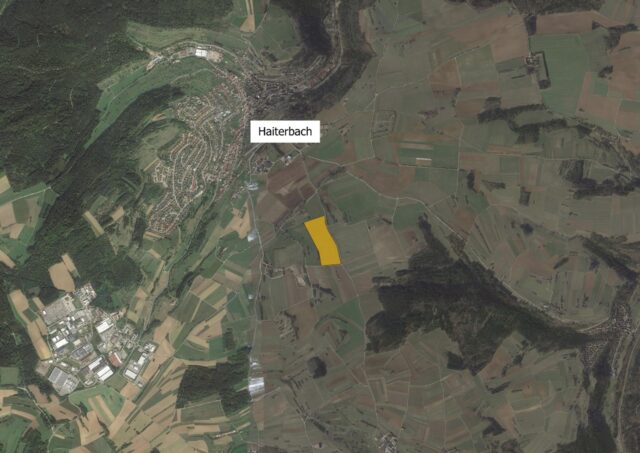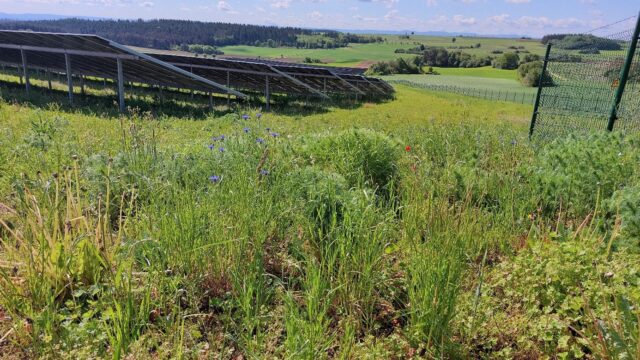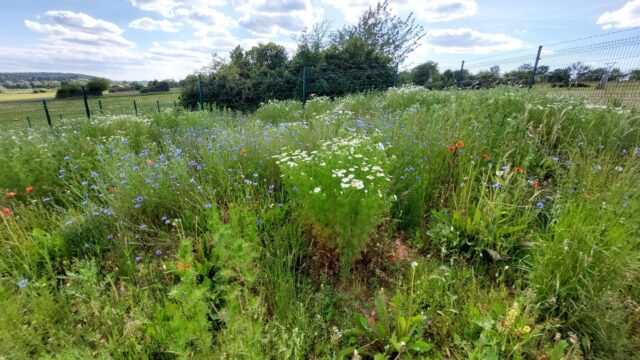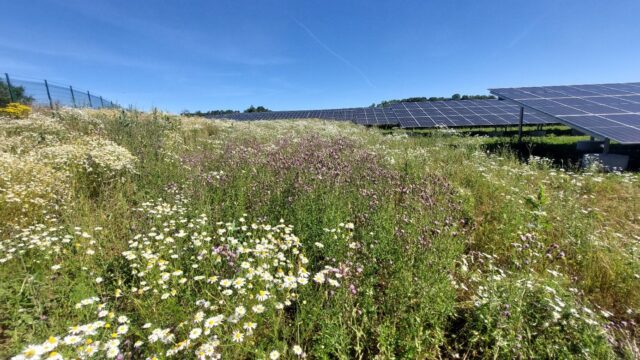Haiterbach Blätschenscheider solar park
EnBW's Haiterbach Blätschenschneider solar park is located in the district of Calw, around one kilometre south of the municipality of Haiterbach. It was commissioned in 2024 and covers an area of 8.4 hectares. This makes it one of the youngest plants analysed in the study.
The investigation revealed that Ruderal and pioneer vegetation with a diverse range of different flowering aspects can be found in the site. In addition, a high number of wild herb species were found in the site.
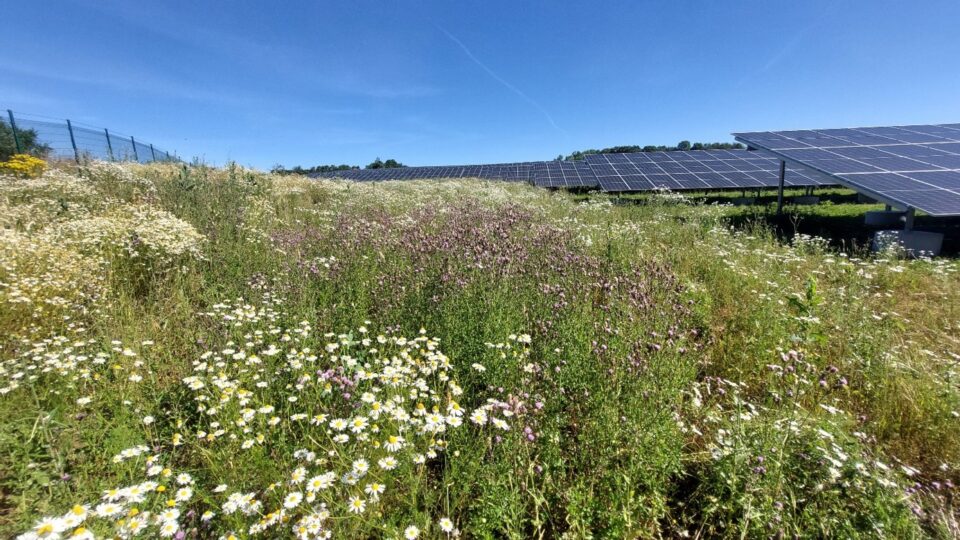
EnBW Energie Baden-Württemberg AG
8.8 MW
8.4 ha
2024
Baden-Württemberg
48.5138729844 - 8.65853427283
Arable land
Table of contents
| Species groups | Investigated |
|---|---|
| Plants | |
| Locusts | |
| Butterfly | |
| Dragonflies | |
| Reptiles | |
| Amphibians | |
| Birds | ✔ |
| Bats | ✔ |
| Miscellaneous |
✔ = Investigation carried out on behalf of the operators
Natural environment and special features
Neckar and Tauberland, Gäuplatten
The site is located in the middle of fields with a high proportion of winter cereals and rapeseed and is surrounded by hedges and copses in the immediate vicinity. Recreational land and private gardens are located to the north of the site. The village of Haiterbach is about one kilometre to the north. There are no bodies of water worth mentioning in the immediate vicinity of the site. There is a small area of mixed forest about 500 metres to the south-east.
The site drops from its highest point at 613 metres above sea level to 580 metres to the south.
Field (intensive), target biotope (mainly): Meadow of medium habitats
Floor
Brown earth and terra fusca made from the products of limestone, marl and dolomite weathering as well as rendzina made from limestone
Clay slurries
Construction method
0.6
4.4m
3m
19°
3 pieces
22mm
The frames consist of two rows of posts without additional bracing.
Bifacial modules were installed.
The paths in the Haiterbach solar park are made of gravel.
The system has varying row spacings of 3.45 to 6.1 metres.
Management
The Bläschenschneider solar park is mown once or twice a year, with the first mowing not permitted before mid-June. Neither pesticides nor fertilisers are used. In addition, maintenance can be carried out by sheep grazing with an adapted stocking density.
Equalisation measures
The following compensatory measures were ordered:
- To the east, a two-row shrub hedge is to be planted over a width of approx. 3.5 metres. The hedge should not exceed a total height of 4 metres. Use of native trees and shrubs. The hedge may be interrupted in four places over a width of 5 metres for development purposes.
- External habitat enhancement for the skylark (CEF measure) of 2.25 ha. (Implementation completed at the start of construction)
